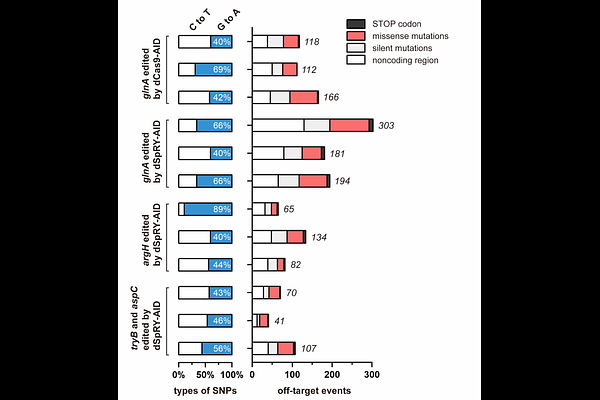One-for-all gene inactivation via PAM-independent base editing in bacteria

One-for-all gene inactivation via PAM-independent base editing in bacteria
Li, X.; Wei, Y.; Wang, S.-Y.; Wang, S.-G.; Xia, P.-F.
AbstractBase editing is preferable for bacterial gene inactivation without generating double strand breaks, requiring homology recombination or highly efficient DNA delivery capability. However, the potential of base editing is limited by the adjoined dependence on the editing window and protospacer adjacent motif (PAM). Herein, we report an unconstrained base editing system to enable the inactivation of any genes of interests (GOIs) in bacteria. We first employed a dCas9 derivative, dSpRY, as the effector to build a base editor with activation-induced cytidine deaminase, releasing the dependence on PAM. Then, we programmed the base editor to exclude the START codon of a GOI instead of introducing STOP codons to obtain a universal approach for gene inactivation, namely XSTART, with an overall efficiency approaching 100%. By using XSTART, we successfully manipulated the amino acid metabolisms in Escherichia coli, generating glutamine, arginine, and aspartate auxotrophic strains. The effectiveness of XSTART was also demonstrated in probiotic E. coli Nissle 1917 and photoautotrophic cyanobacterium Synechococcus elongatus, illustrating its potential in reprogramming clinically and industrially relevant chassis. To be noticed, we observed a relatively high frequency of off-target events as a trade-off for the efficacy and universality.